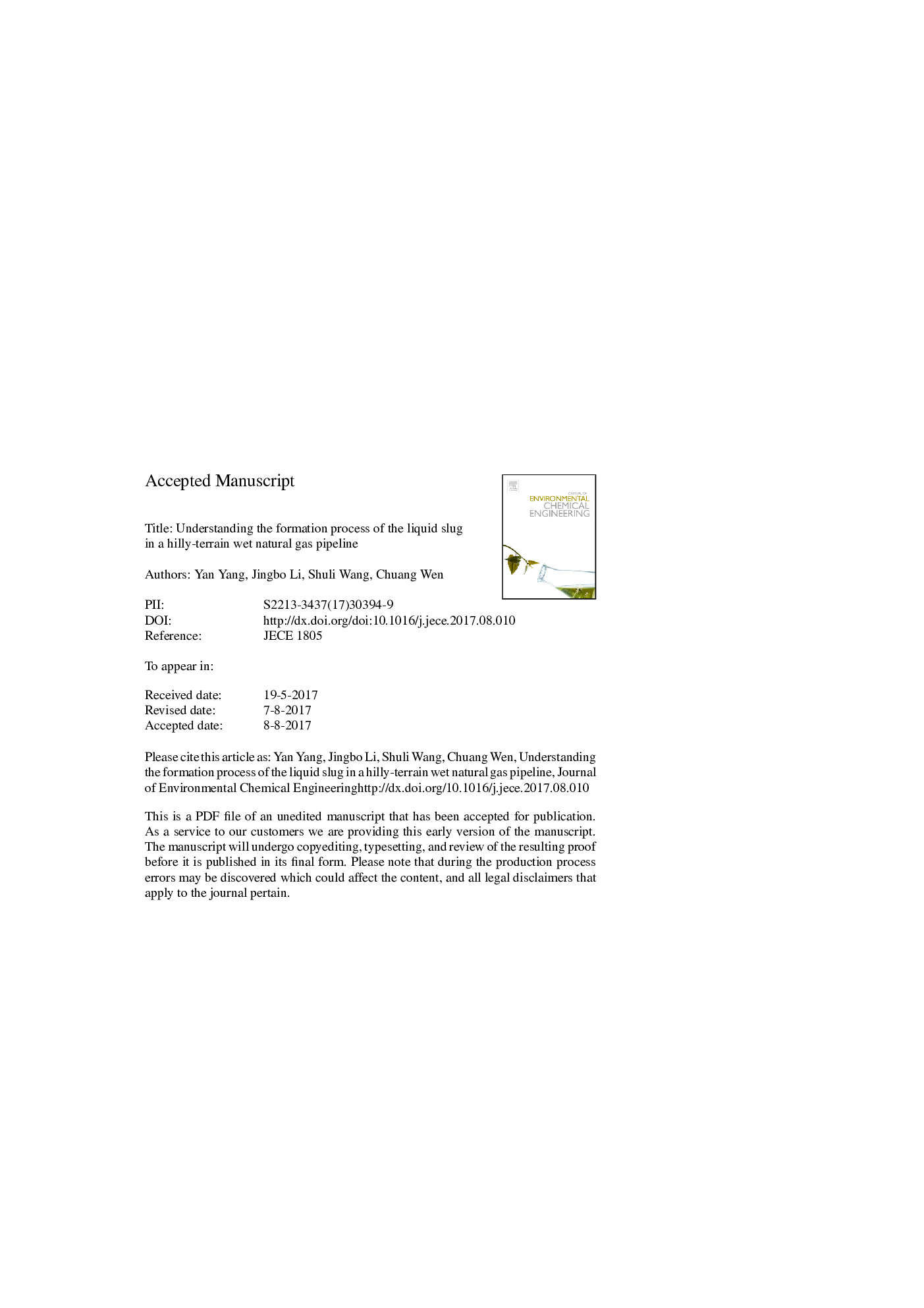| Article ID | Journal | Published Year | Pages | File Type |
|---|---|---|---|---|
| 6664242 | Journal of Environmental Chemical Engineering | 2017 | 31 Pages |
Abstract
In the present work, the liquid slug formation in a hilly-terrain pipeline is simulated using the Volume of Fluid model and RNG k-ε turbulence model. The numerical model is validated by the experimental data of the horizontal slug flow. The influence of the pipe geometric structure and flow condition on the liquid slug formation is discussed including pipe diameter, inclination angle, gas superficial velocity and liquid holdup. The results show that the pipe is blocked by the liquid slug at the moment of slug formed. The pipe pressure suddenly increases, and then decreases gradually in the process of liquid slug formation and motion. The pipe pressure drop and liquid holdup decrease along with the increasing inclination angle of ascending pipe. On the contrary, they rise with the increase of the inclination angle of descending pipe. Higher gas superficial velocity and liquid holdup result in a larger pressure drop in the formation of a liquid slug, and correspondingly induces a slug flow more rapidly in the hilly-terrain pipelines.
Related Topics
Physical Sciences and Engineering
Chemical Engineering
Chemical Engineering (General)
Authors
Yan Yang, Jingbo Li, Shuli Wang, Chuang Wen,
